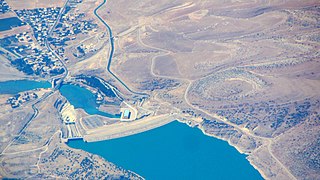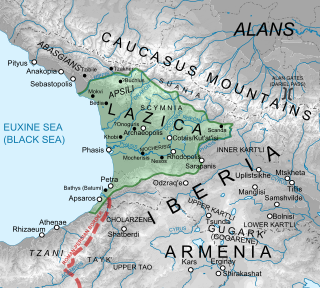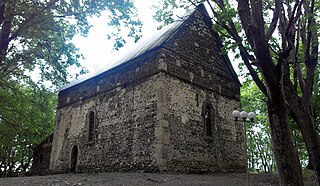 W
WThe Roman–Sasanian war of 421–422 was a conflict between the Eastern Roman Empire and the Sasanians. The casus belli was the persecution of Christians by the Sassanid king Bahram V, which had come as a response to attacks by Christians against Zoroastrian temples; the Christian Eastern Roman Emperor Theodosius II declared war and obtained some victories, but in the end, the two powers agreed to sign a peace on the status quo ante.
 W
WThe East Roman–Sassanid War of 440 was a short conflict between the East Roman Empire and the Sassanian Empire. The reason for its short ending was that the southern Roman provinces were being invaded by the Vandals, which forced the East Romans to sue for a quick end to the war to focus on the Vandal invasion. The Sasanians were also paid some money in return for peace.
 W
WThe Byzantine–Sasanian War of 572–591 was a war fought between the Sasanian Empire of Persia and the Eastern Roman Empire, termed by modern historians as the Byzantine Empire. It was triggered by pro-Byzantine revolts in areas of the Caucasus under Persian hegemony, although other events also contributed to its outbreak. The fighting was largely confined to the southern Caucasus and Mesopotamia, although it also extended into eastern Anatolia, Syria, and northern Iran. It was part of an intense sequence of wars between these two empires which occupied the majority of the 6th and early 7th centuries. It was also the last of the many wars between them to follow a pattern in which fighting was largely confined to frontier provinces and neither side achieved any lasting occupation of enemy territory beyond this border zone. It preceded a much more wide-ranging and dramatic final conflict in the early 7th century.
 W
WThe Anastasian War was fought from 502 to 506 between the Byzantine Empire and the Sasanian Empire. It was the first major conflict between the two powers since 440, and would be the prelude to a long series of destructive conflicts between the two empires over the next century.
 W
WThe Batman River is a major tributary of the Tigris, joining it near the source of Tigris called Dicle River in southeast Turkey. It originates in the Anti-Taurus Mountains and flows approximately from north to south, passing near the city of Batman and forming a natural border between the Batman Province and Diyarbakır Province. The historic Malabadi Bridge crosses the river near the town of Silvan. The region along the Batman River is known for its oil fields. The Batman Dam was built in 1999 in the upstream, together with the associated reservoir and hydroelectric power plant.
 W
WThe fall of Hatra, capital of the Kingdom of Hatra under Sanatruq II, took place in the 3rd century after a lengthy siege by the Sasanian king Shapur I. Hatra was plundered and abandoned, and its kingdom dissolved.
 W
WThe Treaty of Dara, also known as the Fifty-Year Peace, was a peace treaty concluded between the Byzantine and Sassanid (Persian) empires at the frontier town of Dara in what is now southern Turkey in 562. The treaty, negotiated by Peter the Patrician for the Byzantine emperor Justinian I and Izadgushasp for the Sassanid king Khosrau I ended the 20-year-long war over the Caucasian kingdom of Lazica. The treaty contained 13 articles, and is well-recorded. It covered all parts of the two empires, Persarmenia, Lazica, the client states, and the Arab allies.
 W
WThe Iberian War was fought from 526 to 532 between the Byzantine Empire and the Sasanian Empire over the eastern Georgian kingdom of Iberia—a Sasanian client state that defected to the Byzantines. Conflict erupted among tensions over tribute and the spice trade.
 W
WJulian's Persian War, or the Perso-Roman War of 363, was the last undertaking of the Roman emperor Julian, begun in March 363. It was an aggressive war against the Sasanian Empire ruled by Shapur II.
 W
WThe Lazic War, also known as the Colchidian War or in Georgian historiography as the Great War of Egrisi, was fought between the East Roman (Byzantine) Empire and the Sasanian Empire for control of the ancient Georgian region of Lazica. The Lazic War lasted for twenty years, from 541 to 562, with varying success and ended in a victory for the Persians, who obtained an annual tribute in exchange for ending the war. The Lazic War is narrated in detail in the works of Procopius of Caesarea and Agathias.
 W
WLegio I Armeniaca was a pseudocomitatensis legion of the Late Roman Empire. The Legio I Armeniaca was probably founded in the late 3rd century by Julian the Apostate, although it could have been founded by Diocletian It is possible that the name of the legion could mean that it was originally part of the garrison of the Armeniac provinces, but the unit, together with its twin legion II Armeniaca, appears to have been included in the imperial field army. The legion was based in Bezabde until the Persians captured the area in 360. The Legion took part in Julian's invasion of the Sassanid Empire. The Notitia dignitatum records the legion as being under the command of the magister militum per Orientis around 400.
 W
WLosorion or Lysiris, was a Byzantine (Roman) fortification on the eastern Black Sea coast, in Lazica in what is now Batumi, western Georgia. In 6th century, it was constructed by Byzantine emperor Justinian I, and due to its strategic location became a battleground of the 541–562 Lazic War between Rome and Sasanian Persia (Iran). It was identified with the Medieval fortress of Batumi, known as Tamaris Tsikhe, i.e. Queen Tamar's Castle.Lazica is ours, in which is also the city of the Petraeans, which has taken its civic identity and title from us, using the name of our piety and being called Justiniana. There lie also Archaeopolis and Rhodopolis, very large and ancient forts. With these are also the forts of Scandis and Sarapanis, which we took from the Persians, and Mourisius (Mochiris) and Lysiris (Losorion) and whatever other works we have performed among the Lazi.
 W
WThe Peace of Acilisene was a treaty between the East Roman Empire and the Sassanid Empire sometime between 384 and 390 which divided Greater Armenia between these two empires. Persia received the greater share. By this treaty the Byzantine Empire/East Roman Empire also finally admitted the loss of Kartli-Iberia to Sassanid Iran. From this point on, Iranian influence grew once again in eastern Georgia, and Zoroastrianism appeared to have become something like the second established religion alongside Christianity.
 W
WPetra was a fortified town on the eastern Black Sea coast, in Lazica in what is now western Georgia. In the 6th century, under the Byzantine emperor Justinian I, it served as an important Eastern Roman outpost in the Caucasus and, due to its strategic location, became a battleground of the 541–562 Lazic War between Rome and Sasanian Persia (Iran). Mainstream scholarly opinion identifies Petra with a ruined settlement of Late Antiquity at the village of Tsikhisdziri in Adjara, southwestern Georgia.
 W
WSkande, sometimes known as Skanda (სკანდა), is a village in the Terjola Municipality, Imereti, Georgia. It is located in western part of the country, in the small river valley of Chkhari, part of the Kvirila River system, some 15 km northeast of the town of Terjola. Its population as of the 2014 census was 434.
 W
WVartsikhe is a village in the Baghdati Municipality, Imereti, Georgia. It is located in western part of the country, in the Imereti Lowlands, at the confluence of the Rioni and Khanitskali rivers, some 17 km northwest of the town of Baghdati. Its population as of the 2014 census was 1,559.